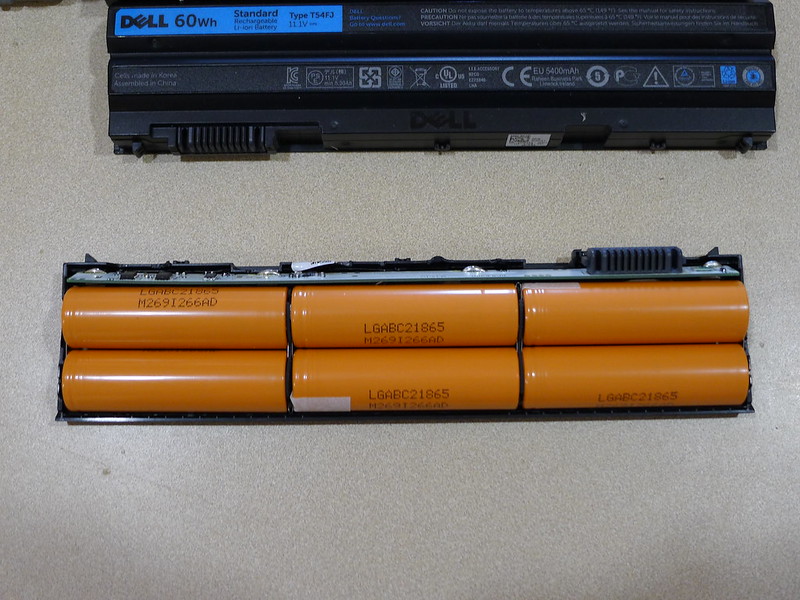Batteries in parallel (positive to positive, negative to negative) multiply current (amps), voltage remains at single cell voltage.
Batteries in series (positive to negative) multiply voltage while current remains the same.
Wattage (power) is volts X amps
Capacity is either Ah (Amp Hour) or vAh (VoltAmpHour, also watt hour (Wh (or KWh on your electric bill)). The difference between watt hour and volt amp hour is something called “power factor” which doesn’t apply in DC applications since voltage and amperage are never out of phase.
Hope I’m not stating the obvious here, but I’ve seen several posts which could be easily answered with basic knowledge about electricity but not a lot that elaborate on the basics, so here we go.
A common analogy for electricity is water flow. A bucket can serve as our battery.
- Volts is a measure of potential, the difference between the poles(terminals). A bucket of water at ground level has no potential. If you elevate it, now it has potential. The higher you elevate it, the more potential it has.
- Amperes (Amps) measure current flow, coulombs per second. A coulomb is a fixed quantity of universal charge units. If it makes it easier, consider coulombs a fixed quantity of electrons. A bucket with no hole in it has no flow rate. Add a hole and you create flow and can then measure flow rate (water leaving over time). Bigger hole, larger flow rate. High drain devices (those which require a lot of current over a short period of time) like certain vaping devices and high output lights can deliver their maximum potential when paired with power sources that can deliver current to match the device’s needs.
- Amp-hour (Ah or mAh (milliAmpHr = Ah/1000)) measures how much coulombs the cell can deliver. In the water analogy, how much water the bucket can hold. Remember, Amps = coulombs/hour so if we multiply that by time, we cancel out the units above and below and are left with coulombs, which in our water analogy is equal to the volume of water in the bucket.
- You need both voltage and current flow to have power (Watts or VoltAmps). A full bucket at ground level can deliver no water. Likewise, a bucket lifted way up in the air with no hold also can not deliver water. Also, an empty bucket high up in the air also has virtually no available energy. An example of this is a Tesla coil.
The reason manufacturers use differing voltage/current combinations has to do with things like conductivity, losses, etc… Trying to push a lot of current through a small wire (or circuit) will generate a lot of heat, which is detrimental to the circuit and also generates a lot of heat, which wastes energy.
Back to battery packs. Part of the problem is that manufacturers sometimes use different voltages to calculate the voltage of their packs. The pack voltage is a multiple of the base cell voltage that they use. Some use 4.2v, 4.0v, 3.7v and others 3.6v. The first thing I do is look at the voltage rating of the pack and try to determine which base voltage they are using. If the pack voltage is 4, 8, 12, then they are probably using 4,0 volts in their calculations. 4.2, 8.4, etc… and I’d assume 4.2. 3.6, 7.2, 10.8, etc…3.6 and 3.7, 7.4, 11.1, etc… 3.7.
I also look at how many 18650’s would fit within the form factor. BTW, most modern battery packs are comprised of multiple unprotected 18650’s, but I have seen other battery types, so this is not an absolute. I’m currently looking at a battery pack from an Acer Netbook. The battery compartment is approximately 8” long and 1 5/8” wide (same as an HP laptop battery pack I’m also looking at). Converting that to metric, we get 203.2mm x 41.275mm. The nominal dimensions of an 18650 is 18.6mm diameter x 65.2mm len. Based on that, we see that we can fit 2 rows of batteries 3 high within this space (2 x 18.6mm = 39.2mm (well within 41.275), 3 x 65.2 = 195.6 (also well within 203.2mm)). Based on this, we can surmise that the pack has 6 18650 cells within.
Both the Acer and HP list their pack voltage as 10.8v, so they are using a combination of batteries in parallel and series. Since 10.8v = 3 x 3.6v, we can determine that the pack has 3 pairs of batteries, each pair comprised of 2 18650 welded (not soldered, btw) in parallel, with the 3 pairs connected in series.
The specs on the outside of the Acer pack says 10.8vdc, 4400mAh, 48Wh. From above, we know that batteries in series multiply voltage, so if we divide 10.8 by 3, we confirm Acer is using 3.6v in their calculations. Also from above, we know that batteries wired in parallel multiply capacity and since ours are in pair we can divide 4400mAh and determine that our individual cells are probably speced at around 2200mHh.
The HP specs are 10.8v, 55Wh. Dividing 55Wh by 10.8v results in 5.10Ah per cell, but don’t forget, their “cell” is actually 2 18650’s welded together in series, so to know the Ah of each 18650, we need to again divide 5.10Ah by 2 18650s so the final result is 2.55Ah per 18650.
Based on the above calculations, we can assume that in this case, the HP pack uses higher capacity 18650s, which makes sense, as it is a newer pack and I’m assuming 2550mAH batteries either didn’t exist when the Acer pack was made or they used lower capacity because of cost or other design considerations (probably the latter).



